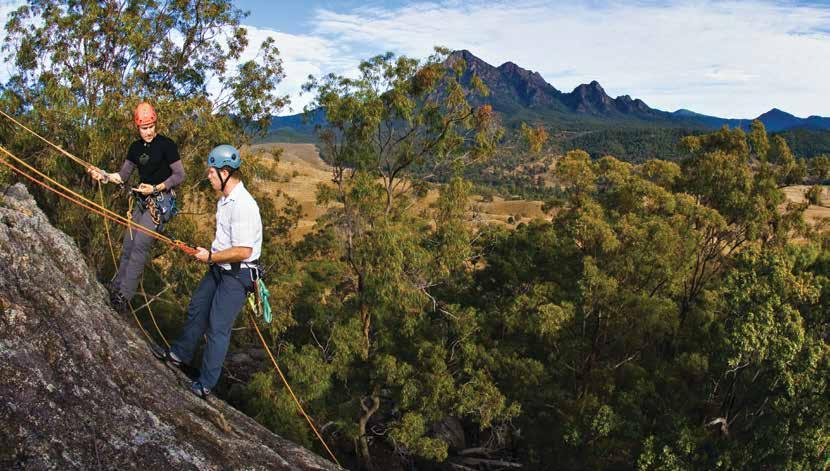
2 minute read
KEY INDUSTRIES THAT BENEFIT FROM BIODIVERSITY
TOURISM
Nature-based attractions represent the top five most appealing attractions in Australia with 53% of tourists nominating Australia’s beaches to be the most appealing attraction followed by Australian wildlife (46%), the Great Barrier Reef (44%), rainforest and national parks (42%) and unspoilt natural wilderness (40%) (Hajkowicz et. Al, 2013). The Scenic Rim has large areas of the latter two.
The Scenic Rim possesses world class natural assets that will continue to attract tourists in greater numbers into the future. The pressures on global biodiversity and natural habitats as a result of a changing climate and human pressures will increase the value of natural areas and habitats that remain pristine. This represents a commercial advantage for the local tourism industry as the region's richness in natural assets and biodiversity are an increasingly valuable attraction for tourists. As a result, the numbers of visitors seeking nature-based experiences are expected to increase requiring a more effective and holistic management of natural assets for positive tourism outcomes.
AGRICULTURE
Agriculture, fisheries and forestry contribute over $220 million dollars per annum to the local economy (Scenic Rim Economic Brief, 2014). This important industry relies on the ecological services, such as soil and water provided by the environment.
Agriculture and human health both benefit from the ecological service that nature provides though clean water, improved soil condition, erosion prevention, pollination, pest control, flood mitigation, soil formation, improved pasture growth and treatment of waste material.
The biodiversity and productivity of agricultural soils are threatened by: Declining soil health Loss of agricultural land to urban and industrial development Soil erosion Lack of access to secure water supplies Vegetation fragmentation and clearing in upper catchments
A loss in biodiversity will reduce the ecological service that nature can provide and in turn have negative impacts on productivity and profitability of farmland. A modest decline in primary production attributable to a loss in ecological services would result in significant economic flow on impacts over the next twenty years (Marsden, Jacobs and Assoc, 2010). A fall in agricultural production will also have a serious impact on regional SEQ affecting employment, social character and downstream logistics and manufacturing.
RECREATION
Open space and nature-based recreational opportunities are key drivers of quality of life and important factors in why people choose to live in or visit South East Queensland. The following livability factors top the list of what SEQ residents say they value about living in the region (Queensland Government 2010):
Openness or spaciousness Closeness to natural areas Attractive appearance of neighbourhood Range of flora and fauna Recreational opportunities Community size
These factors play a major role in maintaining the quality of life in SEQ. Maintaining these factors is highly reliant on maintaining biodiversity. Even a modest decline of 2% in recreational activity due to loss or damage to natural assets (excluding fishing) could result in a decline in expenditure of approximately $200 million dollars across the SEQ region over the 2009-2031 period (Marsden, Jacobs and Assoc, 2010).







